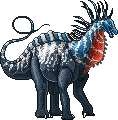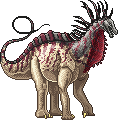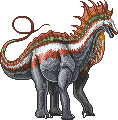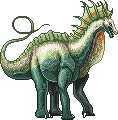October donation pets
Posted: September 30th, 2018, 9:28:24 pm
So, in about, 2.5 hours the October donis will come out.
Any thoughts/ideas?
It's my birthday month so I hope it's something cool. Maybe something spooky-ish since it's Halloween month.
__________
Spiked Cazaui
Egg

This multicoloured egg has bony spikes that rattle together when the egg is approached.
Hatchling
 (m)
(m)  (f)
Adult
(f)
Adult
 (m)
(m) (f)
(f)
General
Frilled Cazaui
Egg

This multicoloured egg whistles when approached.
Hatchling
 (m)
(m)  (f)
Adult
(f)
Adult
 (m)
(m) 
General
Sprites: Lazuli
Description: Sochitelya
Any thoughts/ideas?
It's my birthday month so I hope it's something cool. Maybe something spooky-ish since it's Halloween month.
__________
Spiked Cazaui
Egg

This multicoloured egg has bony spikes that rattle together when the egg is approached.
Hatchling
 (m)
(m)  (f)
(f)
Spoiler
Cazaui hatchlings are surprisingly large given their egg size; wrapped tightly within the shell, they often need a day or two to completely stretch out and unkink themselves. Once upright, hatchlings immediately start looking for food in order to begin growing, and should be kept away from Keep gardens so they don't strip the vegetation to the ground. Spiked cazaui have soft spikes for the first few weeks of life, but these gradually straighten and stiffen until they're sharp enough to prick the skin of anyone who isn't careful. Even as hatchlings they aren't very cuddly but as they grow, they're quite content to babysit Keep children while grazing.
 (m)
(m) (f)
(f)Spoiler
A fully grown spiked cazaui stands roughly 9 feet at the shoulder, with a thick body and a relatively short neck. Their size means they spend most of their day feeding, which they do at a deceptively slow pace. Adult cazaui are capable of surprising bursts of speed when frightened, threatened, or in a mood to play. Spiked cazaui use their neck spikes to warn off predators with loud rattles, and these spikes can also be used as protection if the rattling doesn't work. They're unable to be ridden, but will pull heavy loads as long as they get treats at the end of the work.
Spoiler
Cazaui are generally friendly to anyone or anything that isn't noticeably a threat, but are still alert for danger and quite adept at protecting themselves and their family. Spiked cazaui live on the edges of deserts and other arid lands, where the female's colouring blends in when she needs to lay eggs or protect a nest. The male's much brighter colouring is thought to be both a threat display and a distraction, leading predators to chase him instead of discovering the female. Less vegetation means they've adapted to eating almost everything the desert has to offer, including cacti, spikes and all. Some magi believe that eating this cacti helps the spiked cazaui grow and maintain its own spikes, and those keeping a spiked cazaui ensure they have a steady supply of cacti on hand.
Egg

This multicoloured egg whistles when approached.
Hatchling
 (m)
(m)  (f)
(f)
Spoiler
Cazaui hatchlings are surprisingly large given their egg size; wrapped tightly within the shell, they often need a day or two to completely stretch out and unkink themselves. Once upright, hatchlings immediately start looking for food in order to begin growing, and should be kept away from Keep gardens so they don't strip the vegetation to the ground. Frilled cazaui begin to whistle even within their eggs and continue it all through their lives, each cazaui identifiable by their unique sequence of notes.
 (m)
(m) 
Spoiler
A fully grown frilled cazaui stands roughly 12 feet at the shoulder, with a thick body and a relatively short neck. Their size means they spend most of their day feeding, which they do at a deceptively slow pace. Adult cazaui are capable of surprising bursts of speed when frightened, threatened, or in a mood to play. Frilled cazaui are often more aggressive than their spiked cousins, leading to fights - both serious and in play - where they use their powerful necks against each other like battering rams. They're unable to be ridden, but will pull heavy loads as long as they get treats at the end of the work.
Spoiler
Cazaui are generally friendly to anyone or anything that isn't noticeably a threat, but are still alert for danger and quite adept at protecting themselves and their family. Frilled cazaui live within jungles, where the female's colouring blends in when she needs to lay eggs or protect a nest. The male's much brighter colouring is thought to be both a threat display and a distraction, leading predators to chase him instead of discovering the female. Living in an area with more abundant vegetation has led the frilled cazaui to grow larger on average than its spiked cousin. When in an area where frilled cazaui live, magi have reported beautiful serenades whistled at dusk and dawn, thought to be a way to say good night and then to greet the sun.
Description: Sochitelya